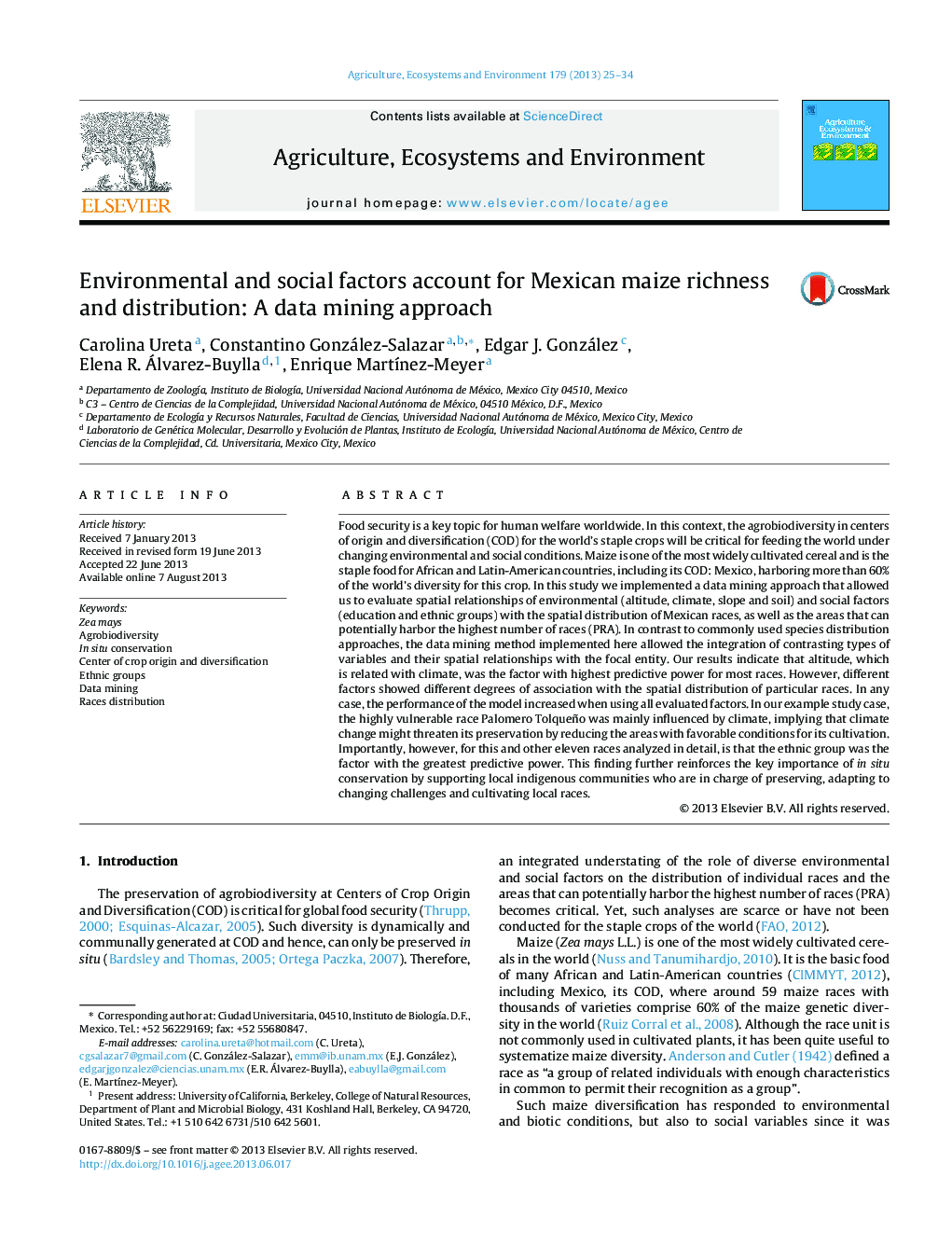| کد مقاله | کد نشریه | سال انتشار | مقاله انگلیسی | نسخه تمام متن |
|---|---|---|---|---|
| 8488037 | 1552073 | 2013 | 10 صفحه PDF | دانلود رایگان |
عنوان انگلیسی مقاله ISI
Environmental and social factors account for Mexican maize richness and distribution: A data mining approach
ترجمه فارسی عنوان
عوامل محیطی و اجتماعی برای غنای و توزیع ذرت مکزیک: یک روش داده کاوی
دانلود مقاله + سفارش ترجمه
دانلود مقاله ISI انگلیسی
رایگان برای ایرانیان
کلمات کلیدی
موضوعات مرتبط
علوم زیستی و بیوفناوری
علوم کشاورزی و بیولوژیک
علوم زراعت و اصلاح نباتات
چکیده انگلیسی
Food security is a key topic for human welfare worldwide. In this context, the agrobiodiversity in centers of origin and diversification (COD) for the world's staple crops will be critical for feeding the world under changing environmental and social conditions. Maize is one of the most widely cultivated cereal and is the staple food for African and Latin-American countries, including its COD: Mexico, harboring more than 60% of the world's diversity for this crop. In this study we implemented a data mining approach that allowed us to evaluate spatial relationships of environmental (altitude, climate, slope and soil) and social factors (education and ethnic groups) with the spatial distribution of Mexican races, as well as the areas that can potentially harbor the highest number of races (PRA). In contrast to commonly used species distribution approaches, the data mining method implemented here allowed the integration of contrasting types of variables and their spatial relationships with the focal entity. Our results indicate that altitude, which is related with climate, was the factor with highest predictive power for most races. However, different factors showed different degrees of association with the spatial distribution of particular races. In any case, the performance of the model increased when using all evaluated factors. In our example study case, the highly vulnerable race Palomero Tolqueño was mainly influenced by climate, implying that climate change might threaten its preservation by reducing the areas with favorable conditions for its cultivation. Importantly, however, for this and other eleven races analyzed in detail, is that the ethnic group was the factor with the greatest predictive power. This finding further reinforces the key importance of in situ conservation by supporting local indigenous communities who are in charge of preserving, adapting to changing challenges and cultivating local races.
ناشر
Database: Elsevier - ScienceDirect (ساینس دایرکت)
Journal: Agriculture, Ecosystems & Environment - Volume 179, 1 October 2013, Pages 25-34
Journal: Agriculture, Ecosystems & Environment - Volume 179, 1 October 2013, Pages 25-34
نویسندگان
Carolina Ureta, Constantino González-Salazar, Edgar J. González, Elena R. Álvarez-Buylla, Enrique MartÃnez-Meyer,
